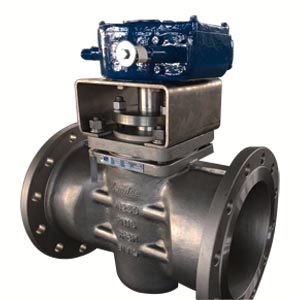Pressure test methods for various kinds of valves (part one)
Posted: 12/27/2018 17:23:53 Hits: 39
In general, strength tests of industrial valves are not taken during use, but the valve body and bonnet that are corroded or repaired should take strength tests. For safety valves, the constant pressure, return pressure and other tests should comply with the specifications and relevant regulations. Valve strength and seal tests should be performed on the valve hydraulic test bench before installation. 20% of low valves need to be checked and every valve should be checked if the valves in the previous spot check are not qualified. Medium and high-pressure valves should be checked 100%. Commonly used media for valve pressure test are water, oil, air, steam, nitrogen, etc.
Pressure test method for globe valves and throttle valves
Usually, put the assembled valves in the pressure testing rack, open the valve disc, inject the medium to the specified value and check whether the valve body and the valve bonnet leaks. Only globe valves need to take the sealing test. During testing, the stem of the globe valve should be in the upright position. When the disc is open, the medium is imported from the lower end of the valve flap to the specified value. Inspect the packing and the gasket. Once the valve is qualified, turn off the valve disc, open the other end to check if there is leakage. If both the valve strength and the sealing tests are to be done, the strength test can be taken first, then reduce the pressure to the specified value and inspect the packing and the gasket. Next, turn off the disc, open the outlet end to check whether the sealing surface leaks.
Pressure test methods for gate valves
The strength test of gate valves is the same as that of globe valves. And there are two sealing test methods of gate valves.
1. Open the shutter to raise the pressure inside the valve, then close the shutter, immediately take out the gate valve and check whether there is leakage at the seal on both sides. Or directly inject the test medium into the plug on the bonnet to the specified value then check the seals on both sides. The above method is not suitable for testing gate valves with a nominal diameter below 32 mm.
2. The other method is to open the shutter and raise the test pressure to the specified value, then close the shutter, open the blind plate at one end, and check whether the sealing surface leaks. Next, repeat the above test until it is qualified. The seal test for pneumatic gate valve packing and gasket should be carried out before the sealing test for the shutter.
Pressure test methods for ball valves
The strength test of the pneumatic ball valve should be carried out when the valve is half open.
1. Floating ball valve sealing test: When the valve is half open, import the medium from one side while the other side is closed. Rotate the ball a couple of times. When the valve is closed, open and check the side which previously is closed, and check the packing and sealing performance at the gasket, where must have no leakage. Next, check the sealing performance of the other side according to the above procedures.
2. Trunnion ball valve sealing test: Before testing, let the zero-load ball rotate several times. The valve should be closed, then import the medium from one side to the specified value. Use the pressure gauge to inspect the sealing performance of the side. If there is no decompression in the specific time, the product is qualified. Follow the above procedures to check the other side. After that, let the valve be half open while two sides are both closed, fill it with the medium, inspect the packing and gasket under test pressure, make sure that there is no leakage.
3. Every position of three-way ball valves should be tested.
Pressure test methods for plug valves
1. When the plug valve is tested, import the medium from one side, and close the remaining passages, rotate the plug to different working positions in turn. The valve body is qualified if there is no leakage.
2. During the sealing test, one-way stopcock should keep the pressure in the cavity being equal to that in the passage, rotate the plug to the closed position, check the other side, then rotate the plug 180° and repeat the above procedures. For three-way or four-way plug valves, the pressure in the cavity should be equal to that at the end of the passage, then rotate the plug to the closed position in turn, bring pressure from the right angle side and check other sides simultaneously. Before testing, the sealing surface of the plug valve is allowed to be coated with a non-acid, dilute lubricating oil. And the product is qualified if there is no leak and enlarged water droplet. The test time for plug valves can be shorter (1-3 min).

